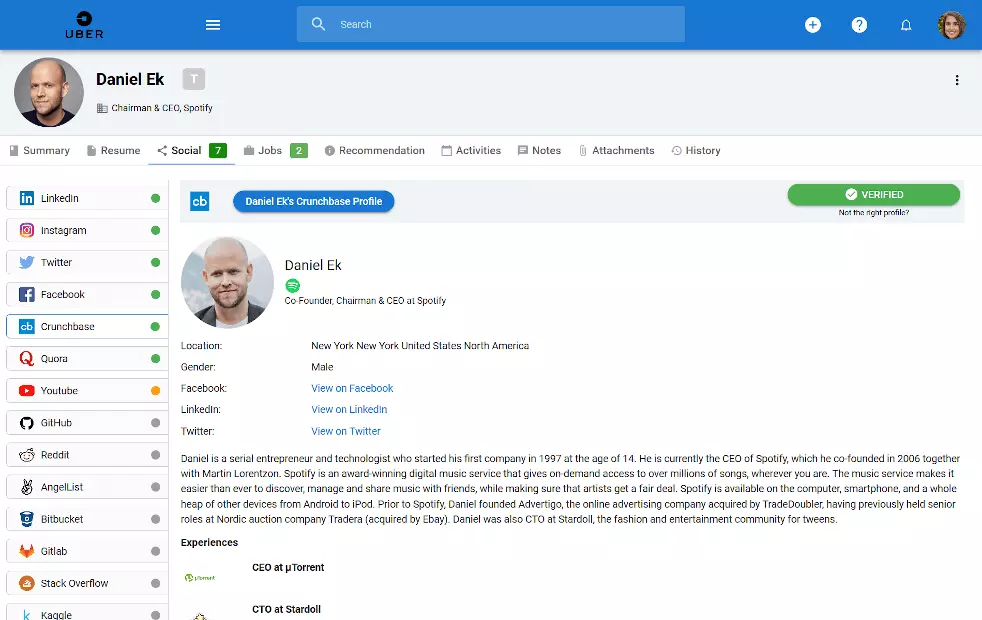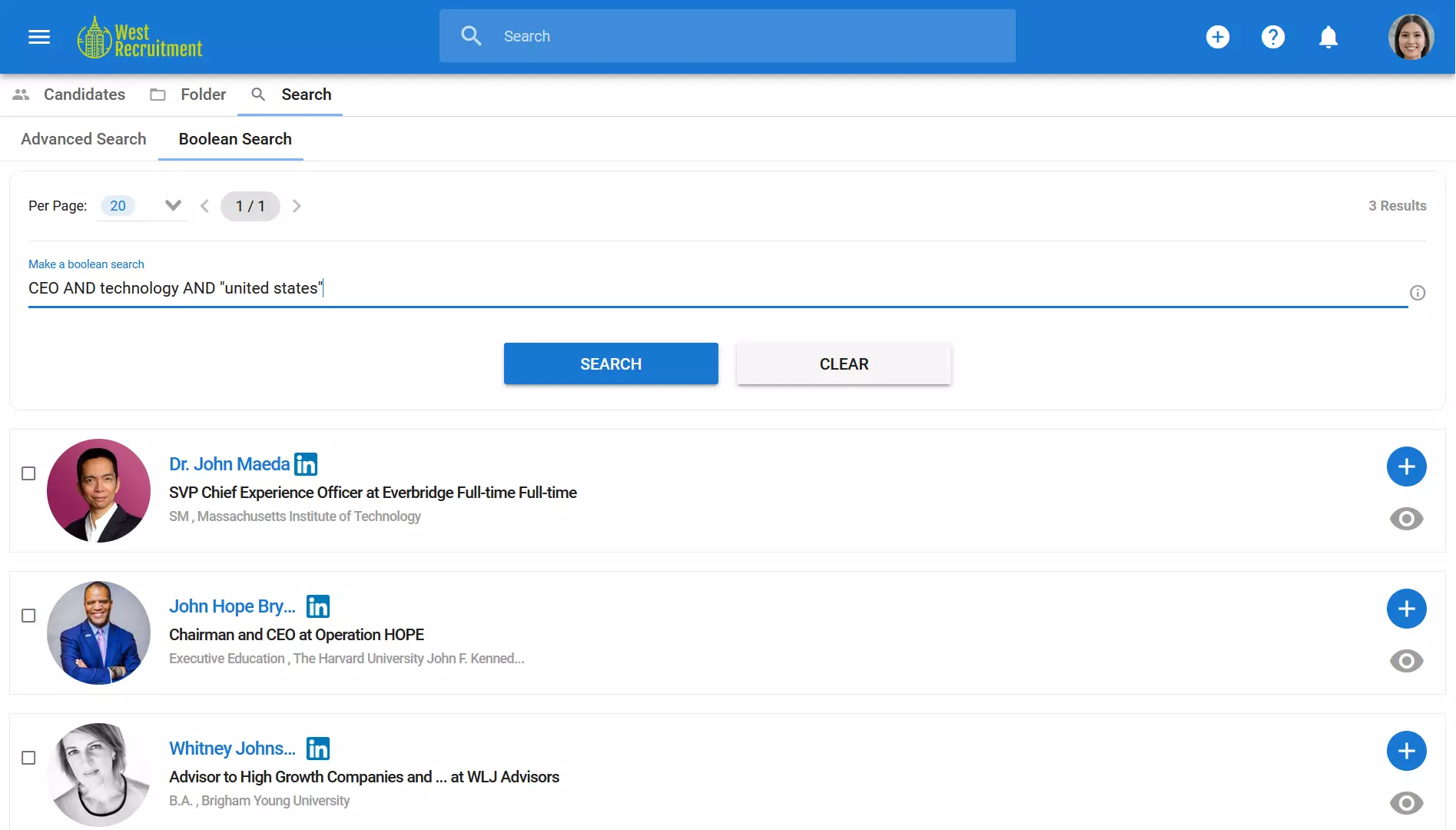Filling executive positions comes with challenges, such as finding the exact type of experts your client needs, convincing them to consider new opportunities, and ensuring you find the right people within the budget. These challenges can make the executive recruitment process time-consuming, costly, and inefficient. This is where an executive search software is an invaluable asset for a recruiter. But do you know how to use it to its fullest potential? Read on to find out.
Introduction to Executive Search Software
Executive search software is a specialized tool designed to simplify and enhance the recruitment of high-level executives. These advanced platforms combine sophisticated algorithms, comprehensive databases, and intelligent matching capabilities to help recruitment professionals identify, evaluate, and engage with exceptional leadership candidates.
Understanding the Challenges of Executive Recruiting
Recruiting top-level candidates is no easy feat. The process comes with distinct hurdles that require a strategic approach. Here are three major challenges recruiters face:
Intense Competition for Top Talent
The demand for skilled leaders has reached unprecedented levels. Organizations are competing not just within their industry or region but on a global scale. Top executives are increasingly selective, looking for roles that offer more than competitive compensation—they seek meaningful opportunities for impact, professional growth, and alignment with their values.
Recruiting Passive Candidates
Many of the most exceptional executive candidates are not actively seeking new positions. These passive candidates require a nuanced approach that goes beyond traditional job postings. Recruiters must:
- Build extensive professional networks
- Develop compelling value propositions
- Utilize advanced sourcing techniques to reach hidden talent
This is where executive search software becomes a game-changer, providing tools to more effectively identify and engage with top-tier passive candidates.
Learn more about passive recruiting like a pro
Evolving Leadership Landscape
The nature of leadership is undergoing a profound transformation. Today's executives must possess:
- Digital literacy
- Adaptive strategic thinking
- Global perspective
- Emotional intelligence
- Change management capabilities
Recruiting professionals must continuously update their understanding of these evolving skill sets to identify candidates who can lead in an increasingly complex business environment.
How Executive Search Software Solves These Challenges
To tackle these obstacles, software for executive search, executive search management software, and executive search recruiting software provide recruiters with cutting-edge tools.
- Advanced Sourcing: These platforms allow recruiters to access vast networks of professionals, including passive candidates, expanding the talent pool beyond traditional channels.
- Candidate Insights: Enrichment features provide detailed profiles, helping recruiters assess qualifications and fit more effectively.
- Efficient Outreach: Tools for finding contact details and managing communication streamline the process of connecting with potential hires, even in confidential searches.
- Analytics: Data-driven insights enable recruiters to refine their strategies and focus on the most promising candidates.
Two standout options in this space are Manatal and LinkedIn Recruiter, each offering unique strengths for executive search.
Executive Search Software Spotlight: Manatal
Manatal is one executive recruiter software that meets these criteria. It is equipped with features and capabilities that can help you effectively find and attract top-level candidates for executive roles, such as:
- Sourcing Hub: Access an external database of over 600 million professionals to discover candidates who match your criteria. With advanced search filters, you can find external candidates based on their skills and location, helping you build a robust talent pipeline for future roles. Learn more at Sourcing Hub.
- Candidate Sourcing: Quickly identify potential executives through integrated tools that pull data from multiple platforms. Advanced search capabilities that allow you to access multiple sources of talent, such as job boards, social media platforms, professional networks, and more.
- Enrichment: Automatically enrich candidate profiles with information from LinkedIn and other sources, providing a comprehensive view of their background. Explore this feature at Candidate Enrichment.

- Find Contact Details: Engagement and communication capabilities that allow you to communicate with candidates directly from the software using various communication tools. You can also leverage automated follow-up features that send timely and relevant messages to candidates after each interaction or milestone. Obtain email addresses and phone numbers effortlessly, enabling direct outreach to passive candidates. See how it works at Find Contact Details.

{{cta}}
How to Use LinkedIn Recruiter for Executive Search
Another powerful option is LinkedIn Recruiter, a widely recognized platform for sourcing professional talent. With its vast network and advanced search tools, it’s particularly effective for executive recruiting. Here’s how to leverage it:
- Precision Targeting: Use filters to narrow down candidates by industry, experience, and skills, ensuring you find executives who meet specific role requirements.
- Direct Messaging: Reach out to passive candidates via InMail, crafting personalized messages that highlight the opportunity and spark interest.
- Integration: Pair LinkedIn Recruiter with other executive search software like Manatal to import profiles and enhance candidate data seamlessly.
For a deeper dive into costs and plans, check out our LinkedIn Recruiter’s robust features make it a strong contender for finding top-level talent. You could use the Boolean search feature in Manatal’s ATS to create a query like this: "CEO" AND "technology" AND "United States"
This query will return candidates who have the title “CEO”, have “technology” listed as a skill, and are located in the “United States”. This way, you can quickly and efficiently find the most suitable candidates for the position.

Best Practices for Using Executive Search Software
- Leverage Advanced Search FiltersUtilize the software's sophisticated filtering options to narrow down candidates based on specific leadership criteria, industry experience, and skill sets.
- Utilize Candidate Enrichment ToolsTake advantage of features that provide additional context and background information about potential candidates, helping you make more informed recruitment decisions.
- Integrate Multiple Sourcing ChannelsCombine the software's capabilities with traditional networking and referral methods to create a comprehensive recruitment strategy.
Conclusion
Finding top-level candidates for executive positions is a challenging but rewarding task for recruiters. It requires a lot of research, networking, screening, assessment, and negotiation. It also requires a high level of discretion, confidentiality, and professionalism. However, with the help of an executive search software, you can simplify and optimize your search process and increase your chances of finding the best talent.
Frequently Asked Questions
Q: Why do recruiting firms need executive search software?
A: Executive search software serves critical strategic functions for recruiting firms, enabling them to:
- Streamline complex talent acquisition processes for high-level positions
- Centralize candidate data management and tracking
- Enhance candidate research and profiling capabilities
- Improve collaboration among search consultants and stakeholders
- Implement sophisticated candidate assessment and screening mechanisms
- Maintain comprehensive relationship management with potential executive candidates
Q: What is the difference between executive search vs. recruitment?
A: While both executive search and recruitment aim to identify and hire talent, they differ significantly in scope and methodology. Executive search is a specialized subset of recruitment focused on senior-level positions, such as C-suite executives and board members. It employs a targeted, confidential, and consultative approach, often involving extensive research and outreach to passive candidates who may not be actively seeking new roles.
In contrast, recruitment is a broader process that applies to hiring at all organizational levels—from entry-level to mid-management—and typically uses more standardized methods, such as job postings and applicant tracking systems. The distinction lies in the strategic focus and complexity of executive search compared to the wider applicability of recruitment.
Q: What types of roles are typically filled through executive search?
A: An Executive search predominantly targets senior leadership and strategic positions, including:
- Chief Executive Officers (CEOs)
- Chief Financial Officers (CFOs)
- Chief Technology Officers (CTOs)
- Chief Operating Officers (COOs)
- Board of Directors members
- Senior Vice Presidents
- Regional and Global Presidents
- Practice and Divisional Heads
- Specialized Executive Leadership Roles across industries
Q: What criteria do firms use to evaluate and shortlist candidates?
A: Firms employ a comprehensive and tailored set of criteria to evaluate and shortlist candidates for executive roles. Key factors include:
- Leadership Experience: Demonstrated ability to lead teams, spearhead strategic initiatives, and oversee complex operations.
- Industry Expertise: In-depth understanding of the relevant sector, including its trends, challenges, and opportunities.
- Cultural Fit: Compatibility with the organization’s values, mission, and workplace dynamics.
- Track Record of Success: Evidence of tangible achievements, such as revenue growth, operational improvements, or successful leadership in prior roles.
- Educational and Professional Qualifications: Relevant academic credentials, certifications, and professional development.
- Soft Skills: Exceptional communication, emotional intelligence, and stakeholder relationship-building abilities.
- References and Background Checks: Verification of professional history and reputation through credible sources.
These criteria ensure that shortlisted candidates meet both the technical and interpersonal demands of the role.
Q: What emerging trends are shaping the future of executive search software?
A: Executive search software is being transformed by innovative trends. Artificial Intelligence (AI) and Machine Learning are key developments. These technologies enhance candidate matching and predict success factors. They also automate tasks such as resume screening. Data Analytics plays a vital role as well. Advanced tools offer insights into candidate pools and market dynamics. They support informed decision-making. Diversity and Inclusion are gaining prominence too. Features to promote diverse candidate slates are emphasized. Tracking diversity metrics and mitigating bias are important. Remote and global search capabilities are enhanced. Virtual tools for interviews and assessments have improved. They enable efficient global talent searches. Lastly, the candidate experience is prioritized. Personalized communication and seamless interactions are essential. These advancements make executive search software more efficient. They enhance its inclusiveness and strategic value.
Q: How long does an executive search last?
A: Executive search processes are inherently complex, with duration contingent upon multiple critical variables, including role intricacies, market candidate availability, and precise organizational requirements. Professional executive recruitment methodologies typically necessitate a comprehensive timeline spanning three to six months, meticulously encompassing discrete procedural stages: comprehensive initial research, strategic candidate sourcing, systematic candidate interviews, rigorous professional assessments, and conclusive executive negotiations.





.png)






















.webp)

.webp)

.webp)
